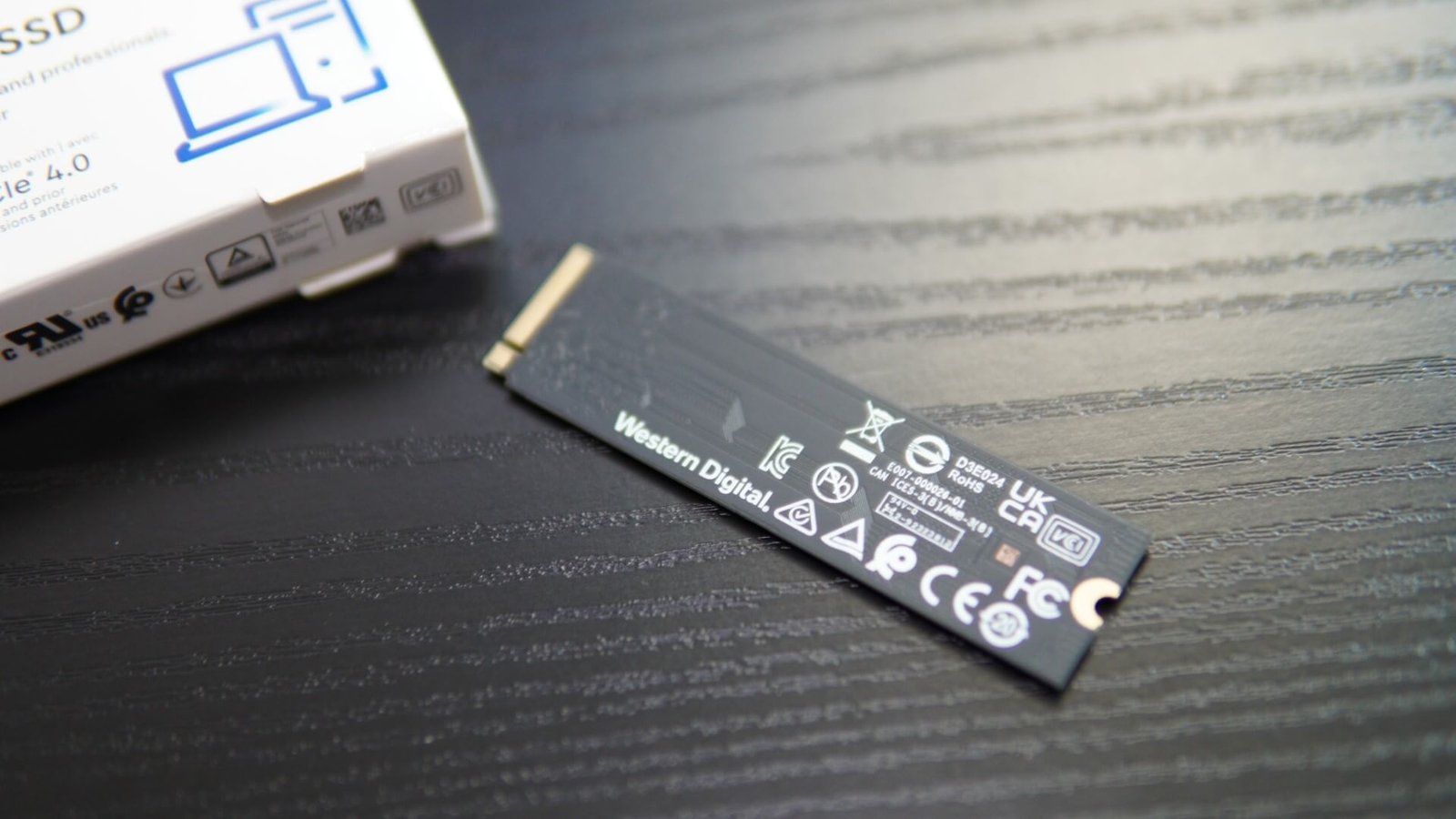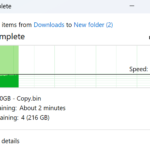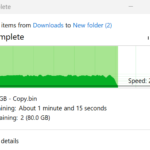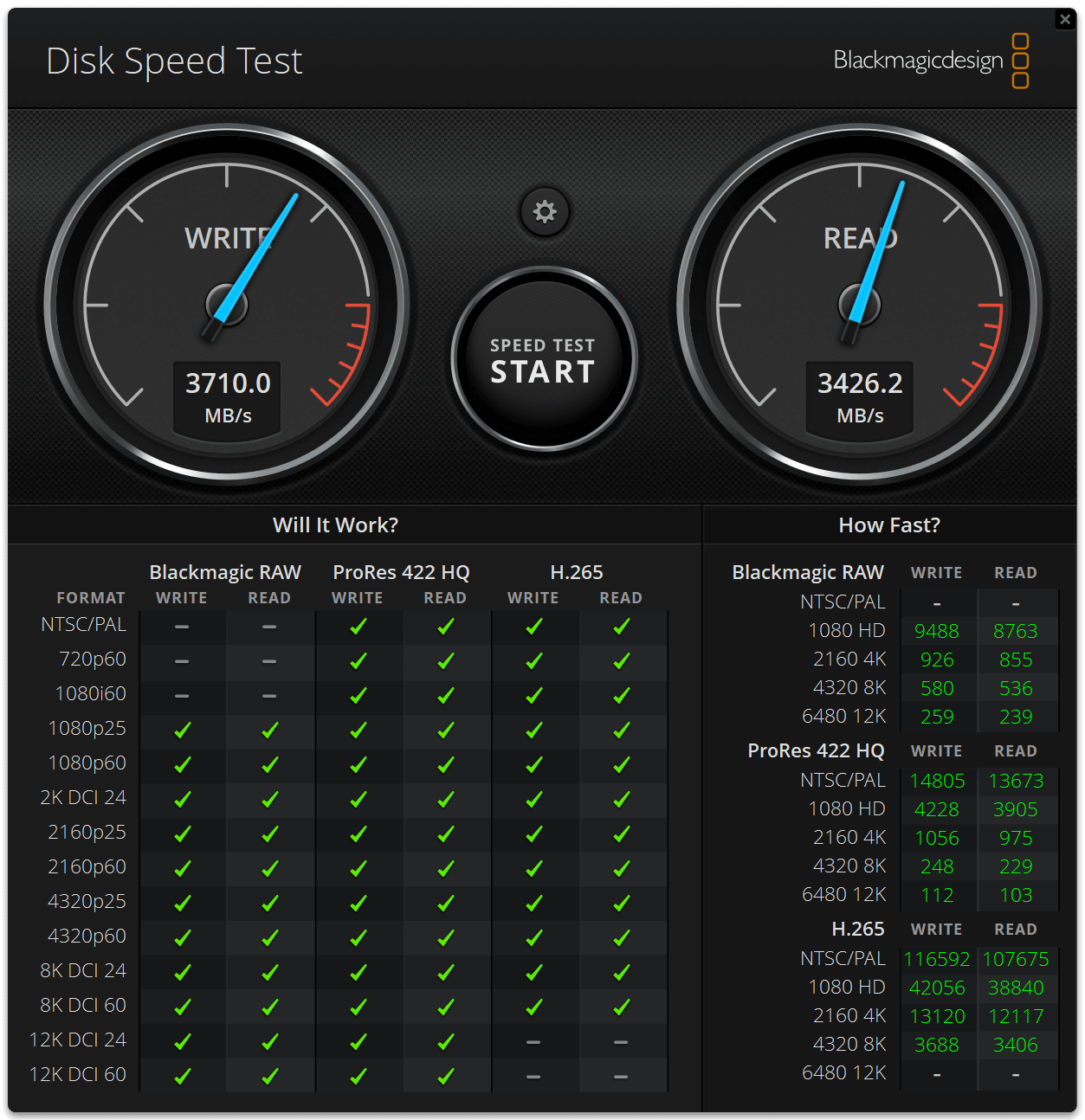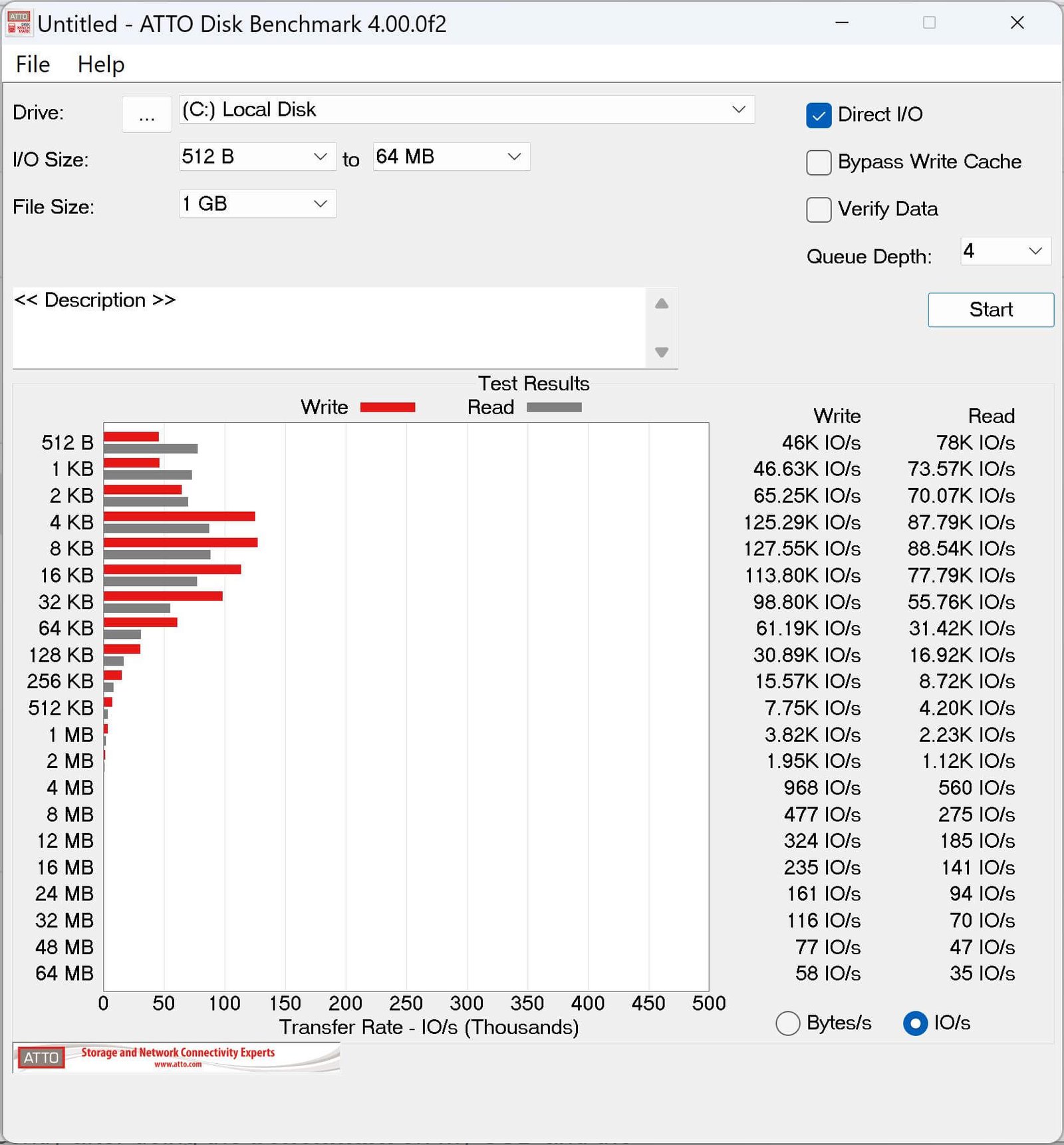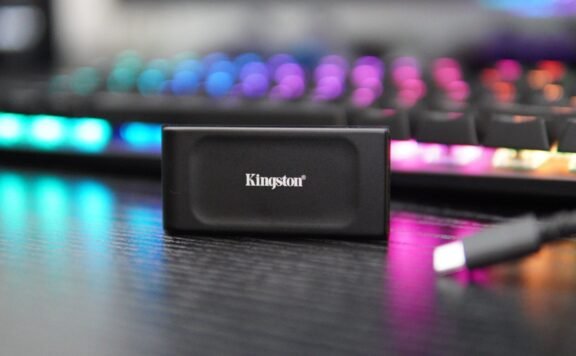While the WD Blue series drives are popular for their affordability and reliability, the company recently released its latest WD Blue SN580 SSD, featuring PCIe 4.0 speeds and more. We reviewed the WD Blue SN580 1TB NVMe PCIe 4.0 SSD, and here are our thoughts about the new drive.
Design
When it comes to reliable and affordable solid-state drives, WD does not fail to meet the user’s expectations with its Blue line-up SSDs. The new WD Blue SN580 SSDs that were recently announced, offer decent PCIe 4.0 SSD speeds and a space-saving design. The SN580 comes in 256GB, 512GB, 1TB, and 2TB capacities.
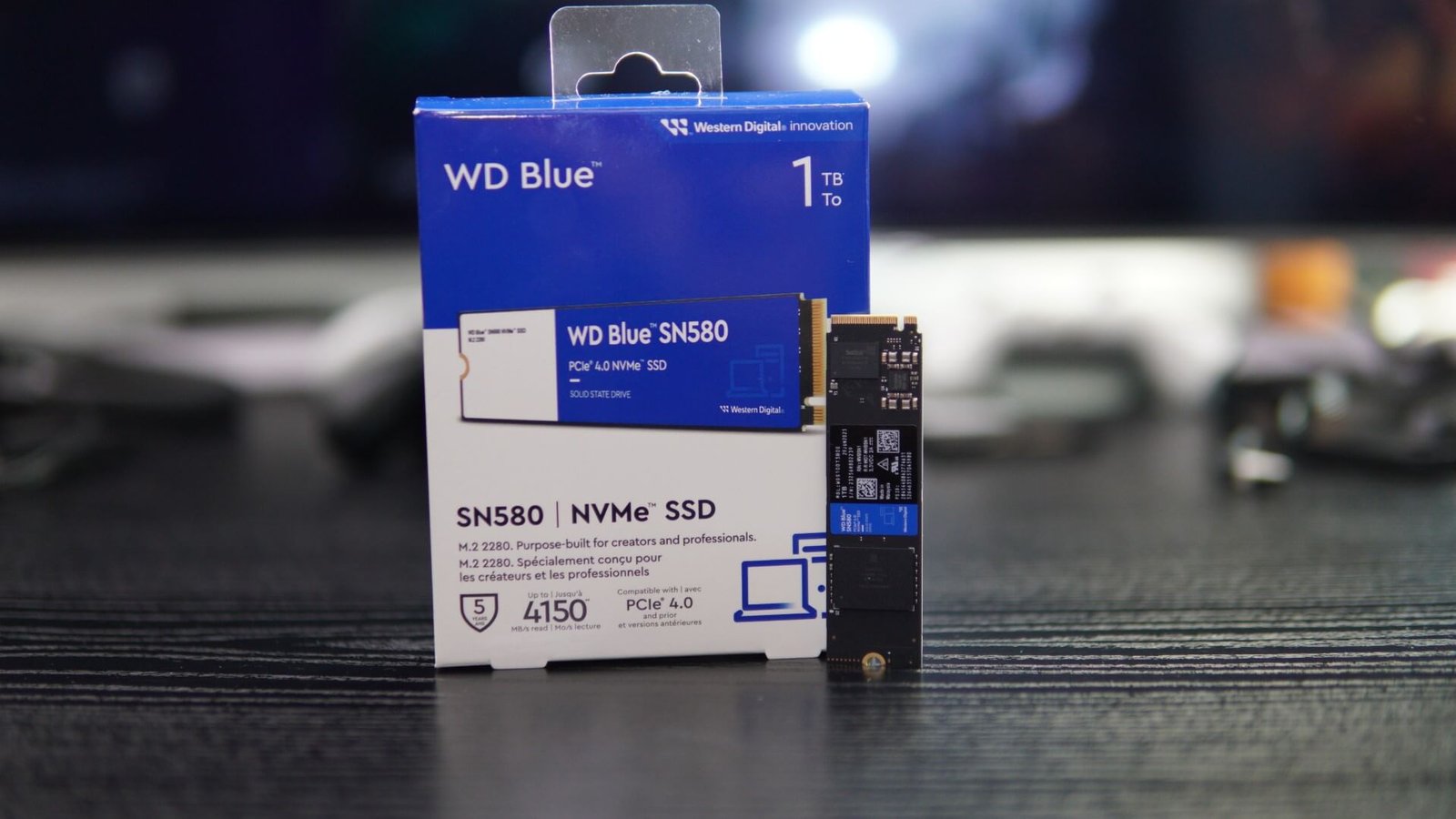 The 1TB SN580 that we received from WD, features a single-sided SSD design. The dimensions of the 1TB SN580 drive are 3.15″ x 0.87″ x 0.09″ and weigh only 5.5g. The drive also comes with a black PCB and a single branding sticker. Since the drive does not come with DRAM and the storage isn’t so big, there is a lot of unused space on the PCB.
The 1TB SN580 that we received from WD, features a single-sided SSD design. The dimensions of the 1TB SN580 drive are 3.15″ x 0.87″ x 0.09″ and weigh only 5.5g. The drive also comes with a black PCB and a single branding sticker. Since the drive does not come with DRAM and the storage isn’t so big, there is a lot of unused space on the PCB.
As we mentioned before, the 1TB SN580 is a single-sided SSD, which means that the rear side of the drive is empty. This gives a slimmer profile, which should be useful for portable devices and slim laptops that have limited space. There is the Western Digital engraving on the rear side of the PCB.
Features
The WD SN580 is a PCIe 4.0-based SSD that uses HMB (Host Memory Buffer) to compensate for the lack of DRAMs. Usually, DRAM SSDs are considered to offer better performance for both loading and copy speeds. However, with the use of the cost-efficient HMB, the copy speeds are still impressive.
WD mentions that the 1TB variant of the SN580 is capable of read and write speeds up to 4150 MB/s. While it isn’t the fastest PCIe 4.0 drive, 4150 MB/s speeds are still good enough to copy large files and snappy loading speeds. It may fall short a bit in loading performance if you plan to insert it on a PlayStation 5. We tested the 1TB SN580 review sample on our testbed which features the AMD Ryzen 7700X processor, Lexar 6000 MHz DDR5 memory, ASUS ROG Crosshair X670E Hero motherboard, XFX 1000W PSW, XFX Radeon 5700XT GPU, and more. The ASUS Crosshair ROG X670E Hero motherboard features several PCIe 4.0 and PCIe 5.0 slots, along with a heatsink and thermal pads to cool the drive.
We ran a file transfer speed test by making a copy of 300GB dummy files. The speed at which the files were copied was an average of 1.9 GB/s. Even with HMB, the drive’s copy speed lasted at similar speeds up until there was 8GB left to be copied, and the speeds dropped down to 200 MB/s. This is a good performance for an HMB-enabled drive.
We also ran several benchmark tools such as CrystalDiskMark, AS SSD, DiskSpeed test, and ATTO. With CrystalDiskMark, we got sequential read speeds of 4139 MB/s, and write speeds of 4120 MB/s. With the AS SSD, we got 3531 MB/s read and 3695 MB/s write speeds. We also got similar speed results with the BlackMagic DiskSpeed test. It should be noted that during the heavy loads, the drive’s temperature went up to 53 degrees with the motherboard’s SSD heatsink. During idle situations, the temperature was around 47 degrees.
While the drive offers decent speeds, we wish that it could have delivered up to 5000/6000 MB/s read and write speeds. Also, I noticed that the endurance of the 1TB SN580 is only 600 TBW. While 600TBW can last for some years, WD could have worked to offer better endurance for these drives. That said, the 256GB version of the SN580 features a poor endurance of only 150 TBW, the 500GB model with 300 TBW, and the 2TB version of the SN580 with an endurance of 900 TBW.
Verdict
The WD SN580 series drives are tailored toward those looking for PCIe 4.0 SSDs at budget prices. The 1TB model that we got for review, has a read and write speed of 4150 MB/s. While the drive lacks a dedicated DRAM chip, the HMB allows the drive to maintain its speeds for some time during intensive copy operations.
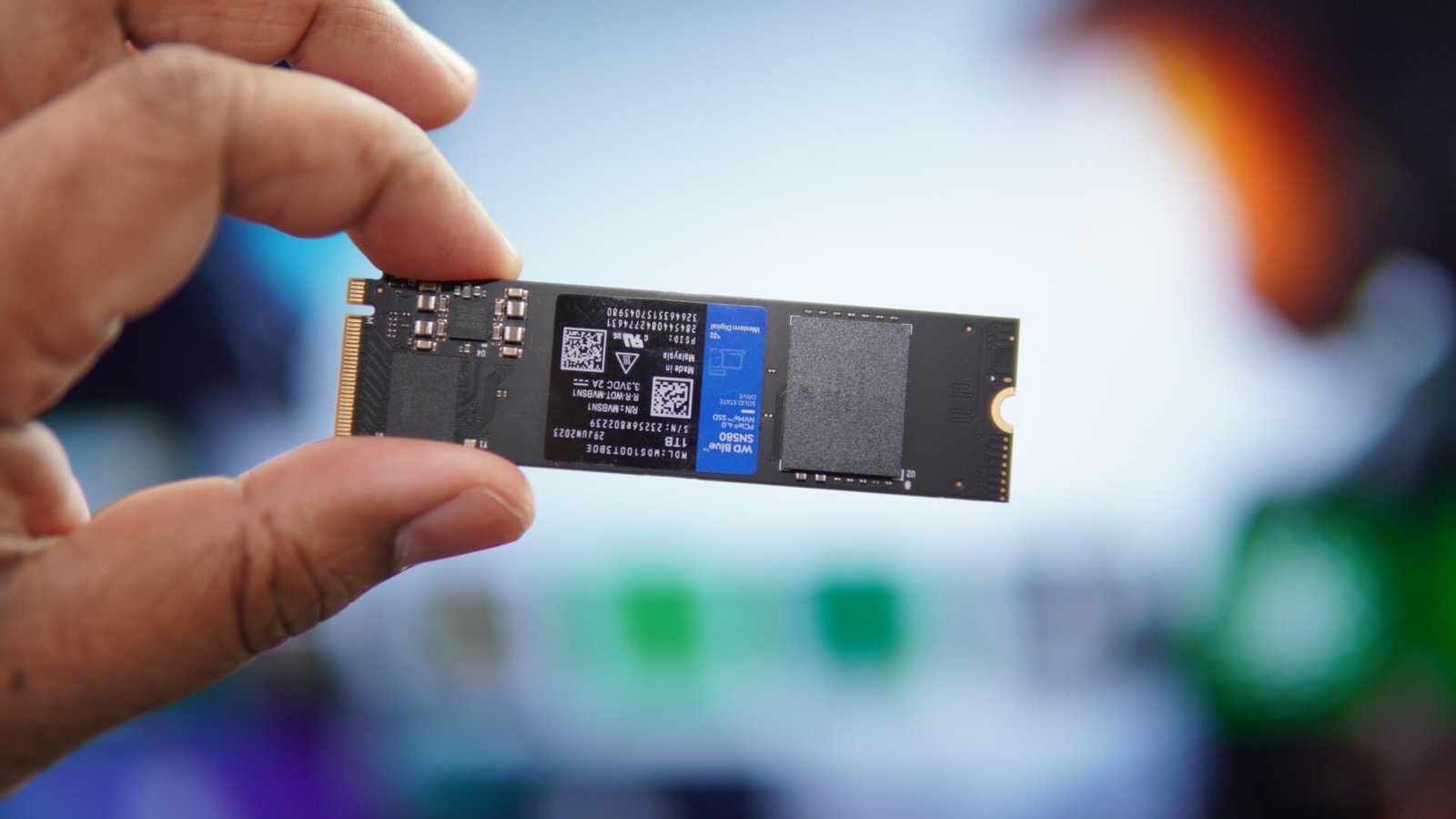 The 1TB version of the WD SN580 is a single-sided drive, which should suit those looking for low-profile SSDs. The endurance of the drive could have been better, and the 1TB model can handle 600 TBW of data. This should easily last for many years for normal consumers who plan to upgrade their systems or build a new system.
The 1TB version of the WD SN580 is a single-sided drive, which should suit those looking for low-profile SSDs. The endurance of the drive could have been better, and the 1TB model can handle 600 TBW of data. This should easily last for many years for normal consumers who plan to upgrade their systems or build a new system.




